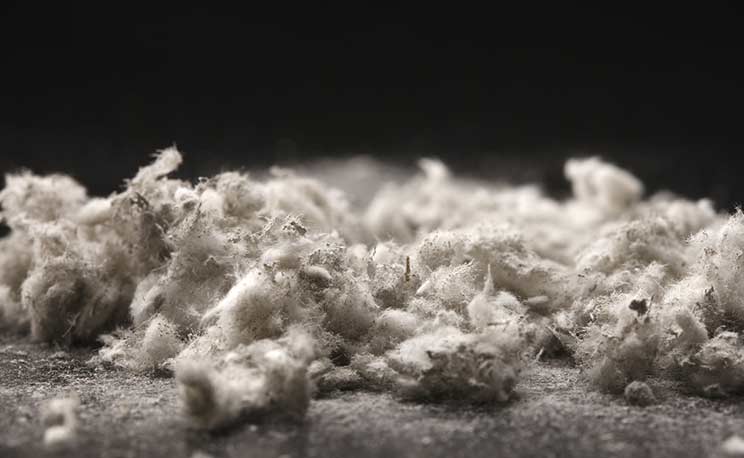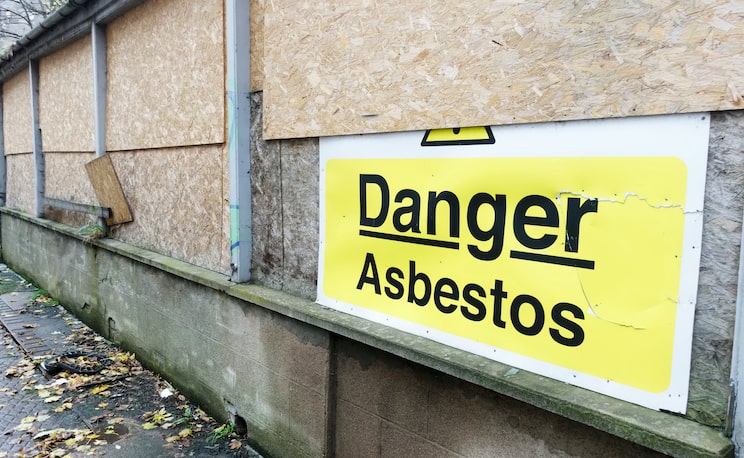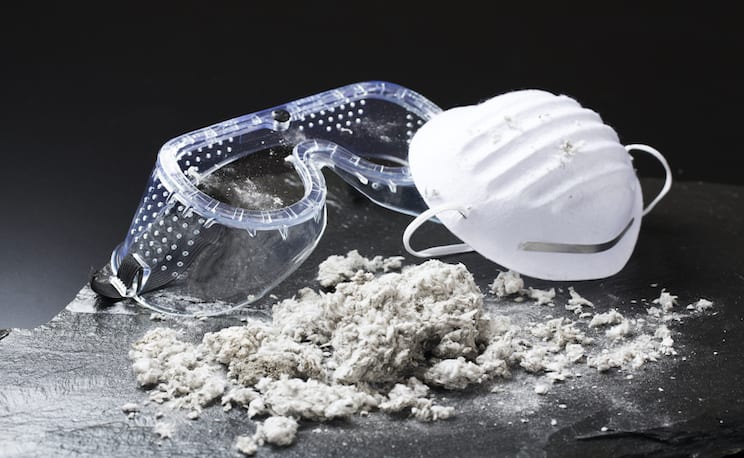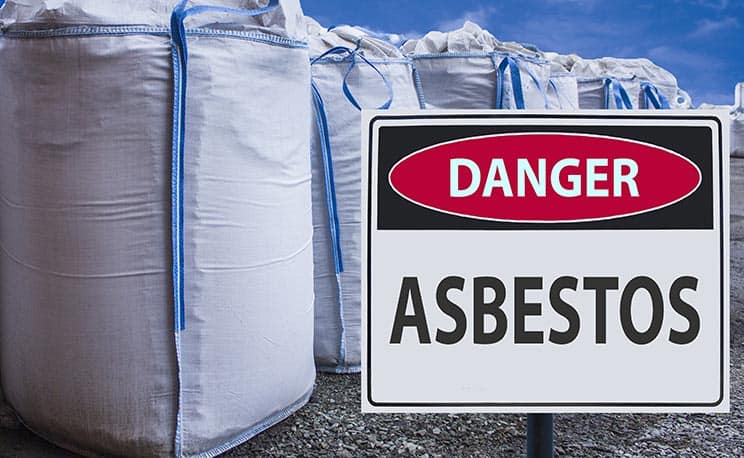Asbestos Definition
Asbestos is a mineral that occurs naturally in nature. Until recently, asbestos was commonly used in manufacturing and construction for insulation purposes. Its’ fire retardant capabilities meant that asbestos was used in almost every part of the construction process, from the floor tiles to the roof. In addition to being fire resistant, asbestos is also highly flexible, resistant to chemicals, has a high electrical resistance and is similar to fabric, making it easy to use in almost any product or project.
Types of Asbestos
While the term asbestos is broadly used to describe a single mineral, it is actually six different minerals. These minerals include Chrysotile, Tremolite, Actinolite, Crocidolite, Amosite and Anthophyllite.
Chrysotile
Also known as white asbestos, chrysotile is the most dangerous and most common form of asbestos in the world. This type of asbestos was widely used in building and insulating products which can be found in the walls, floors and ceilings of homes, schools and other buildings. Chrysotile asbestos was also often used by manufacturers in pipe and duct insulation, and in various boiler and automobile parts.
Tremolite and actinolite.
While not used in commercial manufacturing and construction, tremolite and actinolite are often found in other minerals such as talc and chrysotile asbestos.
Crocidolite
This form of asbestos takes on a blue hue and can mainly be found in steam engines. Some manufacturers also used crocidolite in cement and pipe insulations, as well as spray-on coatings.
Amosite
Amosite is not as common as chrysotile but it was still regularly used for ceiling tiles, cement sheeting, and insulation, both in pipes and thermal insulation.
Anthophyllite
Similar to tremolite, anthophyllite is often found in chrysotile asbestos. Small amounts were used in construction and insulation materials.
Where Does Asbestos Come From?
Asbestos comes from rocks that naturally occur in nature. The mineral has been around so long that the first recorded use of asbestos comes from the Stone Age, where people used it as a way to create wicks. Later on, ancient Egyptians and Greeks used asbestos cloth to prevent dead bodies from deteriorating. Ancient Romans also used asbestos as napkins and in cleaning tools, remarking how the mineral remained unharmed by fire. But while a fire-resistant mineral proved useful to these people, it did not stop them from noticing the harmful effects asbestos had on those who worked with it. It had been noted early on that slaves who mined asbestos often contracted a respiratory illness and had damage to their lungs after inhaling the fibers. Despite this, the use of asbestos continued and expanded. By the late 1800’s, the use of asbestos became industrialized and by the 1900’s asbestos mining and use in various industries was at an all-time throughout the world.

What Does Asbestos Look Like?
Unfortunately, asbestos is not something the average person can see by themselves because the asbestos fibers are microscopic. Only those specially trained on the right testing equipment can determine if there are asbestos fibers in your home or building. It is not recommended to personally examine possible asbestos materials because disturbing them may release asbestos fibers in the air which may then be inhaled. Testing and examination should only be performed by a professional.
If you are afraid that your home or building contains asbestos, contacting a professional to avoid the health risk of fibers being released is crucial. Many companies have been created to not only identify asbestos, but to get rid of the fibers without inflicting harm on others.
What is asbestos used for?
Asbestos was widely used as an insulating and fire resistant material in thousands of industrial and commercial applications as well as in thousands of building products. It has also been found in various talcum powder products.
Common Asbestos Products
According to the United States Environmental Protection Agency (EPA), asbestos is most commonly found in construction products that require insulation or fire resistance. The following are common asbestos products:
- Heat-resistant fabrics
- Clutches and brakes in motor vehicles
- Attic and wall insulation
- Popcorn and textured ceilings
- Roof shingles and tiles
- Vinyl floors
- Electrical shielding
- Firefighting and fireproofing materials
- Adhesives
- Duct tape
- Pipe and boiler coverings
- Seals in gaskets with high temperatures
- Wall protection behind heat yielding products
- Caulks and Putties
- Paints and sealants
- Drywall and joint compound
- Cement and concrete
- …and many other products

In addition to construction materials, asbestos was also found in household appliances made before the 1980’s. These include:
- Heaters
- Ironing boards
- Dishwashers
- Electric ovens
- Coffee pots
- And textiles including placemats, pot holders and dish towels
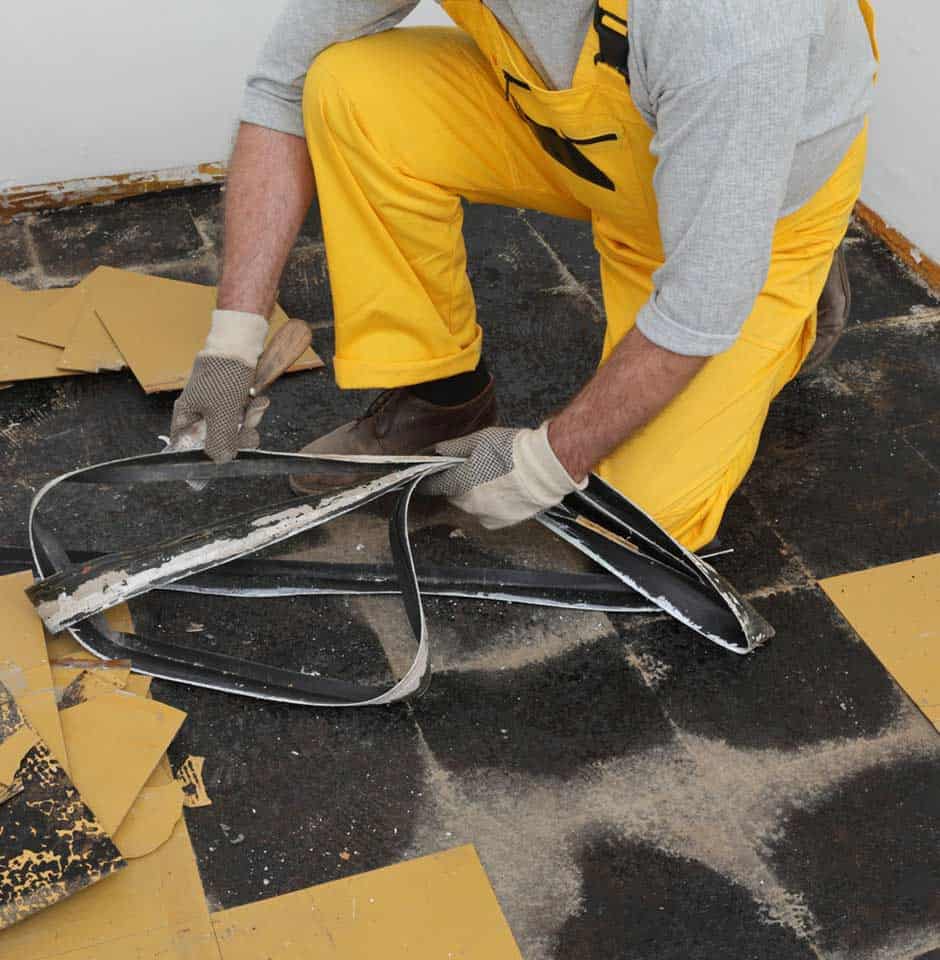
Asbestos Manufacturers
During the industrial revolution, the use of asbestos in heavy industry, manufacturing, and construction increased drastically. Miners, distributors, and manufacturers of asbestos products quickly realized that asbestos was an excellent insulating material that was extremely cheap. Even as the dangers of asbestos became more widely known, many large manufacturers continued to use asbestos. These manufacturers include:
- National Gypsum Corporation
- Raybestos-Manhattan Co.
- Owens Corning/Fireboard Corp.
- Johns Manville
- Celotex Corp.
- W.R. Grace Co.
- 3M
- Bestwall Gypsum
- General Electric
- The Ford Motor Company
- Leslie Controls
- North American Refractories Company (NARCO)
- Mobile Oil Corporation
- J.T. Thorpe and Son, Inc.
- Crown Cork Seal
- International Paper
- Amatex Corporation
- Armstrong World Industries
- U.S. Gypsum
- Pittsburgh Corning
- Babcock & Wilcox
- Combustion Engineering
- Western Asbestos
- Asarco
- Harbison-Walker
- Flintkote
- GAF Corp.
- A.P. Green
- Kaiser Aluminum
- Bondex
- T&N
- Burns & Roe
- C.E. Thurston
- Porter Hayden
- Fuller Austin
- …and many more
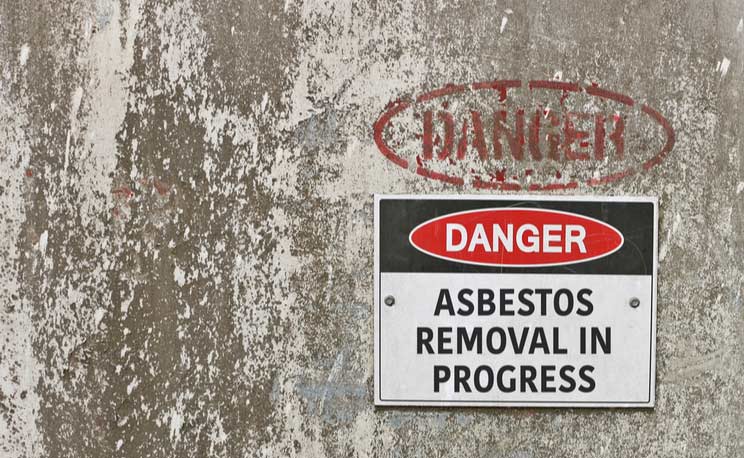
When was Asbestos Used?
The use of asbestos dates back to ancient times, but the current asbestos issue dates back to the early 1920’s, when asbestos became widely used. According to the Agency for Toxic Substances and Disease Registry (ATSDR), asbestos was mined and used mainly during the 20th century. While the ban of many asbestos products began in the early 1970’s, “asbestos is still present in old materials and is still used in products such as automobile brakes and roofing materials. Asbestos may also be present in other commercial products, such as vermiculite (especially vermiculite from Libby, Montana) and talc.”
After the boom of the 1920's, it only took a few years for the asbestos industry to notice the harmful effects of asbestos, but by then, it was a cheap and very effective material used in their products, and the entire asbestos industry was making too much money to consider change.
Asbestos Exposure
How Do People Become Exposed to Asbestos?
Asbestos exposure occurs when asbestos fibers are inhaled through the mouth or nose. According to MedlinePlus, “Breathing in asbestos fibers can cause scar tissue (fibrosis) to form inside the lung. Scarred lung tissue does not expand and contract normally.”
Asbestos fibers are tiny and often, people may not even know that they are inhaling or swallowing them. Asbestos enters the air when the fibers are disturbed, which can occur in natural products by weathering or erosion and in commercial products by cleaning, handling, altering, or cutting products that contain asbestos. Whether asbestos exposure comes from a natural source or from a commercial product, the exposure and damage is the same. The amount of exposure depends on how many asbestos particles are in the air and how much of them you breathe in.
You can also swallow asbestos or get the fibers on your skin. While avoiding asbestos altogether is important, getting it on your skin is not as high risk as inhaling the fibers. According to the ATSDR, only large amounts of asbestos on your skin will cause health effects. Asbestos-related cancers and breathing problems arise from breathing in asbestos, and not simply touching it. However, even minimal contact with asbestos can disturb microscopic fibers causing them to become airborne and inhaled.
Unfortunately, some areas have natural deposits of asbestos. If you live near one of these areas, always keep your home well-circulated, take off shoes outside so fibers do not come into your home and keep windows and doors closed as much as possible. The ATSDR recommends cleaning outdoor areas, such as patios and entryways, with water rather than sweeping and staying on pavement when playing or walking outside. See a map of the areas throughout the United States that hold naturally occurring asbestos available here.
People may also become exposed to asbestos while working in certain industry and manufacturing facilities, and also during construction or home repair projects. Many older homes, specifically those built between the 1930’s and 1970’s, have asbestos and homeowners should avoid doing any home repairs on their own to ensure they don’t disturb fibers and risk exposure. For those who work with asbestos removal or asbestos in homes or buildings that may have asbestos, taking the right precautions is extremely necessary and only those familiar with asbestos exposure should work in areas of risk.
Most Common Occupations Exposed to Asbestos
Millions of US industrial, manufacturing, power plant, and construction workers, as well as others, were exposed to asbestos for years without knowing it was harmful. Some of those are listed below. Even those who may have worn protective equipment could have been exposed, as much of the protective equipment was later determined to be inadequate or defective.
- Heavy Industry workers Iron and Steel workers, foundry workers, shipyard workers, manufacturing workers, chemical and refinery workers, and power plant workers frequently worked in high heat areas around large equipment and machinery heavily insulated with asbestos. These heavy industries, along with the construction industry, were the primary users of asbestos products.
- Construction workers Construction workers often have one of the highest risks of exposure. Between the ‘20s and ‘80s, thousands of industrial, commercial and residential building products contained asbestos literally from the ground up – concrete and cement, bricks and mortar, drywall and joint compound, paint, insulating materials, roofing and siding, and many more products. Opening, cutting, altering, installing, and tearing out these materials caused asbestos exposure.
- Firefighters Firefighters are at a high risk for asbestos exposure because asbestos is released into the air when it is disturbed and it is a heat-resistant material. If a home containing asbestos is on fire, those fibers will be released and those who enter the home, often the firefighters, will risk inhaling large quantities of asbestos. This is why protective gear and masks are so important when entering a home that may be at risk for asbestos. Firefighters may also have had exposure to Aqueous Film Forming Foam (AFFF) which was used to suppress fuel and chemical fires. It has been known to cause Bladder Cancer, Kidney Cancer, Pancreatic Cancer, Prostate Cancer, Testicular Cancer, and possibly related to Leukemia and Lymphoma.
- Automobile mechanics Asbestos was used in brakes, clutches, gaskets, insulating tape and wire, and engine compartments in cars and trucks. Mechanics working on vehicles regularly performed maintenance and repairs which caused asbestos exposure.
- 9/11 Volunteers and Servicemen When the World Trade Center towers came down on September 11th, 2001 it released 400,000 kilograms of asbestos, mercury, fibreglass and benzene into the air. For months following the attack, these toxic substances were inhaled by the servicemen and volunteers who worked on the recovery and cleanup efforts. Due to the prolonged latency period between exposure to these substances and injury, the extent of the toll the exposure had on these men and women is still coming to light and will become even clearer in the next 10-50 years.

Alabama Asbestos Exposure, Cancer & Mesothelioma
In Alabama, the iron/steel, papermill, manufacturing, construction, ship-building and refinery industries have been associated with high-incidences of asbestos exposure and related litigation. We’ll delve into several of these cases involving […]
- Ship Builders
- Miners
- Factory workers
- Insulators (manufacturers and installers)
- Military Service
- Electricians
- Aircraft Mechanics
- Bricklayers
- Carpenters
- Cement Masons and Finishers
- Crane Operator
- Electricians
- Foundry Workers
- Laborers
- Lathers
- Machinists
- Mechanics
- Merchant Marine Seamen
- Millwrights
- Navy Yard Workers
- Painters
- Paper Mill Workers
- Pipe Coverers
- Pipefitters and Plumbers
- Plasterers
- Sheet Metal Workers
- Steelworkers
- Ironworkers
- Refinery workers
- Asbestos abatement workers
- …and many more
Secondary Exposure to Asbestos
Not everyone was exposed to asbestos on the jobsite. It was very common for workers to bring home asbestos fibers on their dusty and dirty clothing without knowing it. Those in the home may have shaken and washed the clothing, or otherwise have been exposed to asbestos fibers on those clothes. Many spouses and children with no known firsthand exposure to asbestos products have been diagnosed with asbestos-related diseases as a result of this secondhand exposure.
Asbestos Exposure Symptoms
If you are afraid you have been exposed to asbestos, it’s important to see a doctor as health effects can get worse over time. The most common symptoms include shortness of breath, chest pain, a tightness in the chest or a dry cough. While seen less often, some people may also notice abnormalities in their nails and changes to their hands such as a softening of the nail beds or a bulging of the fingers.
If asbestos exposure has been prolonged, you may already experience symptoms of an asbestos related disease. Symptoms can include:
- Wheezing
- Abdominal pains
- Muscle weakness
- Unusual amount of fluid around the lungs
- Pleural effusion
- Swelling in the face and arms
- Trouble swallowing
- Nausea and vomiting
- Fatigue
- Weight loss
- Constipation
- Excessive sweating
- Fever
- Irregular heart rhythm
- Blood clots and heart murmurs
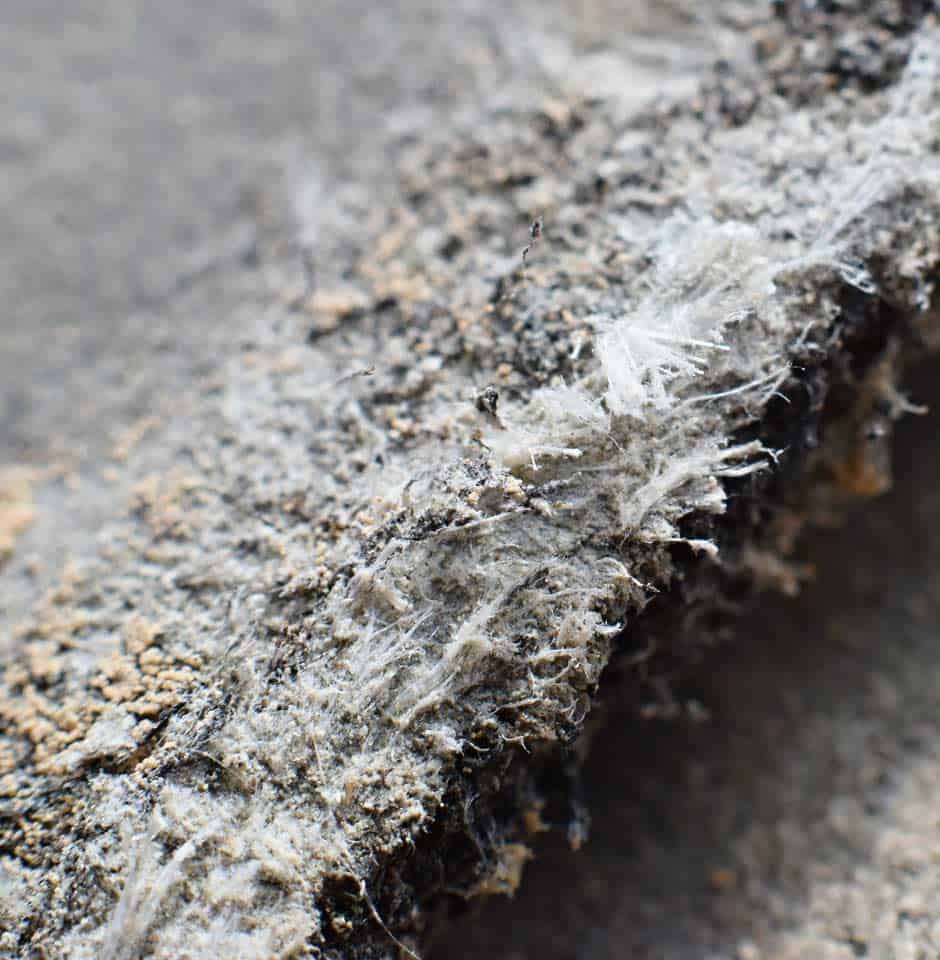
What Should I do if I was Exposed to Asbestos?
If you have previously been exposed to asbestos on a recurring basis, the ATSDR suggests you see a doctor immediately. While asbestos cannot be removed from the lungs, doctors can order testing and help you prevent further damage due to exposure. It’s also very important to know that smoking can make asbestos damage to the lungs much worse. Those who have been exposed to asbestos and who also smoke have a significantly higher likelihood of developing cancer than the general population.
If you have previous exposure to asbestos and a doctor has detected breathing problems, be sure to see a doctor at the first sign of a cough or cold. A simple cough could possibly lead to lung infections when asbestos has been or is currently present in the system.
Does Everyone Who is Exposed to Asbestos Get an Asbestos Disease?
Being exposed to asbestos does not guarantee asbestos disease. While everyone should avoid even the smallest exposure to asbestos fibers, developing an asbestos disease depends on a variety of dynamics. This includes the amount of time you were exposed and how often the exposure occurred, and how much asbestos was in the air you inhaled. If you already suffer from any lung or breathing issues, or you smoke, asbestos exposure can be much more dangerous and even life-threatening. Whether or not you feel healthy, it is a good idea to seek medical attention after awareness of asbestos exposure to help prevent further complications and health issues.

Asbestos Related Diseases
What are the Common Diseases Caused by Asbestos?
Exposure to asbestos can lead to serious health issues and diseases. Numerous diseases can be linked to asbestos, both non-cancerous and cancerous.
- Mesothelioma
Mesothelioma and asbestos often go hand-in-hand. Mesothelioma is a cancer that effects the lungs and chest cavity, specifically the membrane lining around the organs and abdomen. Mesothelioma is a very rare type of cancer, but The American Cancer Society reports that 8 out of 10 cases are due to exposure to asbestos. “When asbestos fibers are breathed in, they travel to the ends of small air passages and reach the pleura, where they can cause inflammation and scarring. This may damage cells’ DNA and cause changes that result in uncontrolled cell growth. If swallowed, these fibers can reach the abdominal lining, where they can have a role in causing peritoneal mesothelioma.” Many medical and scientific experts agree that the only known cause of mesothelioma is exposure to asbestos.
- Lung Cancer
Lung cancer occurs when a tumor in the lungs forms and restricts air passages. Asbestos fibers become trapped in the lungs causing scarring over time and sometimes causing cancer. Those who smoke cigarettes have a significantly greater chance of contracting lung cancer as tobacco combined with asbestos can lead to extremely dangerous health effects in the lungs.
- Asbestosis
While cancers may develop for various reasons, asbestosis is a disease directly related to asbestos exposure. According to the ATSDR, asbestosis is “scarring in the lungs caused by breathing asbestos fibers. Oxygen and carbon dioxide do not pass in and out of scarred lungs easily, so breathing becomes harder.” One of the most worrisome aspects of asbestosis is the fact that many of those affected by it will not experience symptoms for years, allowing the disease to progress without medical intervention.
- Throat Cancers – Laryngeal, Pharyngeal, and Oropharyngeal Cancer
Pharyngeal cancer is a broader term for throat cancer, where asbestos fibers can become lodged, causing scarring and potentially cancer over time.
Laryngeal cancer is a cancer of the larynx, a part of the throat. The larynx is responsible for your vocal chords and when the disease progresses to stage 3 or 4, the patient affected may lose use of their voice. As a person inhales asbestos, it passes through their larynx. Early symptoms often include a sore throat that does not go away with normal medical attention, ear pain, pain when swallowing, a lump in your throat or neck and a change in your voice.
Oropharyngeal cancer is best described as the back of the throat where asbestos fibers can become lodged, causing scarring and potentially cancer over time.
- Digestive Tract Cancers – Stomach Cancer, Colon Cancer, Rectal Cancer
When breathed in, some asbestos fibers can actually be swallowed. When this happens they may pass throughout the digestive tract until becoming lodged in certain places. They can lay dormant for many years before causing cancer. While most people may not think of these cancers as being asbestos-related, it is very common in those with asbestos exposure.
- Ovarian Cancer
When people think of asbestos exposure, they often think of organs like the lungs and throat being affected. But, according to the National Center for Biotechnology, asbestos exposure also puts those at risk for ovarian cancer. It has been proven that some baby powder and talcum powder contained asbestos and its use has been linked to Ovarian Cancer.
- Testicular Cancer
When related to asbestos exposure, testicular cancer takes the form of testicular mesothelioma, which occurs on the membrane lining of the testes. This form of cancer is very rare, but it is often noted that this type of cancer leads to a better prognosis than other forms of mesothelioma. It has been proven that some baby powder and talcum powder contained asbestos and its use has been linked to Testicular Cancer.
- Pleural plaques, Pleural thickening & Pleural effusion
Pleural plaques, pleural thickening and pleural effusion are all asbestos-related diseases. Pleural plaques occur almost exclusively after asbestos exposure and are often the first and most common sign of asbestos disease. Pleural thickening is a type of lung disease experienced by those affected by asbestos. This disease thickens scar tissue, making it hard to breath and resulting in chest pain. Pleural effusion is the appearance of excess fluid around the lungs. This excess fluid can also cause issues with breathing and may be a sign of cancer, specifically mesothelioma.

Clinical Trials for Asbestos Related Lung Cancer and Mesothelioma Treatment
Over 75% of mesothelioma cases involve the lungs. This is called Pleural Mesothelioma. Like all asbestos-related diseases, its cause is breathing asbestos fibers into the lungs. Most often, the patient […]

Asbestos Exposure in the Military
The U.S. Department of Health and Human Services (HHS) estimates that 220,000 United States Military veterans, and other personnel have sustained asbestos exposure in the military between World War II […]
How Do People Get Cancer from Asbestos?
Cancer occurs in the body when cells are damaged or changed. According to the American Cancer Society, “when asbestos fibers are breathed in, they travel to the ends of small air passages and reach the pleura, where they can cause inflammation and scarring. This may damage cells’ DNA and cause changes that result in uncontrolled cell growth.”
To prevent asbestos exposure from developing into cancer, be sure to seek medical attention right after exposure and limit exposure as much as possible.
 Asbestos Law
Asbestos Law
Is Using Asbestos Legal?
It is not entirely illegal to use asbestos, but laws and regulations have made it very difficult to use the product.
Historic Law
he dangers of asbestos were well known by the asbestos industry in the 1930’s, but it wasn’t until the 1970’s when a decades long conspiracy was exposed and the United States government got involved. They began to limit the use of asbestos and created public safety laws surrounding exposure and use. The 1980’s became the decade of removing asbestos from current products and buildings, and the Asbestos Hazard Emergency Response Act of 1986, which required the EPA to inspect schools for asbestos. In 1989, a partial ban was imposed on some asbestos products and any new uses of the fibers were also prohibited.
Current Law
In 2019, the April 2019 Final Rule was put into action by the EPA. This rule “ensures that asbestos products that are no longer on the market cannot return to commerce without the Agency evaluating them and putting in place any necessary restrictions or prohibiting use. The uses covered under this rule were not already prohibited under TSCA and could have returned to the market at any time.” Current law does not make asbestos illegal, but it does make it difficult to use. Some of the current products prohibited under the April 2019 Final Rule include cement products, woven products, roofing felt, pipeline wrap, reinforced plastics, friction materials and more.
Compensation for Asbestos Related Diseases
Asbestos related diseases can be life-threatening and lead to lifelong health issues, cancers and more. For many, asbestos diseases were contracted after increased exposure to asbestos while working on a job. Unfortunately, many of the companies who manufactured asbestos products were aware of the dangers, yet exposed workers to it anyway.
If you have an asbestos related disease, mesothelioma or another cancer possibly related to asbestos, you may be able to receive financial compensation.
Can I Sue for Getting an Asbestos Related Disease?
If you were exposed to asbestos while working on the job, inside a building or using a product containing asbestos and were diagnosed with an asbestos related disease, you may be able to file a lawsuit against liable parties. The right attorney will help you file a personal injury lawsuit against those at fault, which may help with medical costs, lost income, pain and suffering and more.
If a family member has died due to an asbestos related disease, an attorney can help you file a wrongful death suit against those at fault, which may help cover their estate, funeral expenses and help loved ones affected by the death.
 We are Here to Help
We are Here to Help
Were You Exposed to Asbestos?
If you were exposed to asbestos either while on the job or while using a product containing asbestos, we are here to help you. Our top priority at The Law Center is to place you in the best possible legal hands. That’s why we partnered with the attorneys at the Environmental Litigation Group. They have over 20 years of experience handling asbestos exposure cases and have helped those with mesothelioma, lung cancer, stomach cancer and more. ELG’s attorneys have recovered $1.4 billion for their clients and they want to help you, too.
The Environmental Litigation Group will diligently work to achieve the best financial compensation available for your asbestos injury case. Get in touch with us today.
Sources
- https://www.tn.gov/content/dam/tn/health/documents/asbestos.pdf
- https://www.9news.com.au/9stories/september-11-death-toll-from-terror-attack-could-rise-by-millions-due-to-toxic-asbestos-dust/8bc90677-0032-42a2-82f9-4b9baad753d9
- https://www.elglaw.com/faq/how-to-identify-products-that-contain-asbestos/
- https://www.epa.gov/asbestos/learn-about-asbestos#asbestos
- https://www.elglaw.com/faq/do-common-items-also-contain-asbestos/
- https://www.atsdr.cdc.gov/asbestos/overview.html
- https://medlineplus.gov/ency/article/000118.htm
- https://www.atsdr.cdc.gov/asbestos/asbestos_exposure.html
- https://www.atsdr.cdc.gov/asbestos/overview.html
- https://medlineplus.gov/ency/article/000118.htm
- https://www.cancer.org/cancer/malignant-mesothelioma/detection-diagnosis-staging/signs-symptoms.html
- https://medlineplus.gov/ency/article/000118.htm
- https://www.cancer.org/cancer/malignant-mesothelioma/causes-risks-prevention/what-causes.html
- https://www.atsdr.cdc.gov/asbestos/health_effects_asbestos.html
- https://www.cancer.gov/types/head-and-neck/patient/adult/laryngeal-treatment-pdq
- https://www.ncbi.nlm.nih.gov/pmc/articles/PMC3230399/
- https://www.epa.gov/asbestos/epa-actions-protect-public-exposure-asbestos
- https://www.nytimes.com/1979/09/01/archives/asbestos-study-is-begun-on-150-types-of-products-publication-to-be.html
